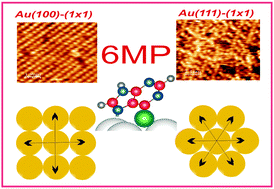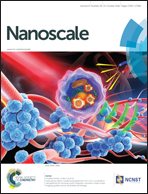The role of the crystalline face in the ordering of 6-mercaptopurine self-assembled monolayers on gold
Abstract
Well-ordered molecular films play an important role in nanotechnology, from device fabrication to surface patterning. Self-assembled monolayers (SAMs) of 6-mercaptopurine (6MP) on the Au(100)-(1 × 1) and Au(111)-(1 × 1) have been used to understand the interplay of molecule–substrate interactions for heterocyclic thiols capable of binding to the surface by two anchors, which spontaneously form a highly disordered film on Au(111). Our results reveal that for the same surface coverage the simple change of the substrate from Au(111)-(1 × 1) to Au(100)-(1 × 1) eliminates molecular disorder and yields well-ordered SAMs. We discuss these findings in terms of differences in the surface mobility of 6MP species on these surfaces, the energetics of the adsorption sites, and the number of degrees of freedom of these substrates for a molecule with reduced surface mobility resulting from its two surface anchors. These results reveal the presence of subtle molecule–substrate interactions involving the heteroatom that drastically alter SAM properties and therefore strongly impact on our ability to control physical properties and to build devices at the nanoscale.


 Please wait while we load your content...
Please wait while we load your content...